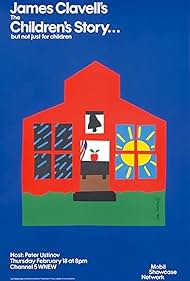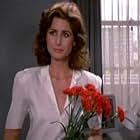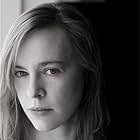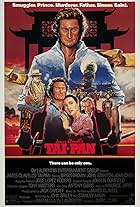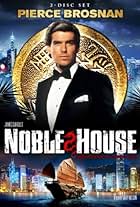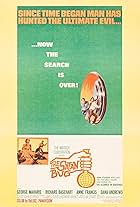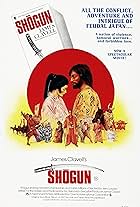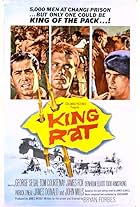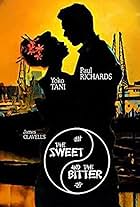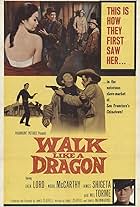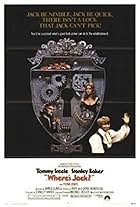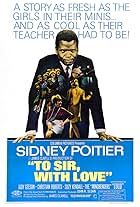A just-established totalitarian government places a new teacher in a classroom of young children while the old teacher is sent away. The new teacher challenges the students' view of their wo... Read allA just-established totalitarian government places a new teacher in a classroom of young children while the old teacher is sent away. The new teacher challenges the students' view of their world. Young Johnny asks questions, but the teacher manages to twist the truth into reasonab... Read allA just-established totalitarian government places a new teacher in a classroom of young children while the old teacher is sent away. The new teacher challenges the students' view of their world. Young Johnny asks questions, but the teacher manages to twist the truth into reasonable answers. It doesn't take long for the children to see things the new teacher's way.
Photos
- The New Teacher
- (as Michaela Ross)
- Student
- (as Max Barabas)
- Student
- (as Danielle Duclos)
- Student
- (as Michael Belleran)
- Student
- (as Toni Gisondi)
- Director
- Writer
- All cast & crew
- Production, box office & more at IMDbPro
Storyline
Did you know
- TriviaThis television production was the first directorial job in a decade for James Clavell. It was based on his own story and would be Clavell's final time in the director's chair.
- SoundtracksChildren of the world
Courtesy of RSO Records, Inc., Stigwood Music, Inc. (Unichappell Music, Inc.) BMI and Bros. Gibb, B.V.
Written by Barry Gibb, Robin Gibb and Maurice Gibb
Performed by The Bee Gees
When the audience delves into the critical issues presented in this film we see a teacher (in a less than typical manner) imploring her students to analyze, question and even adjust their way of thinking and, consequently, of acting. We see it over and over again in our country -- young minds brainwashed and told by parents, teachers, community members, the media and society how to do things, what to believe in and what is or should be important to us. And yet no one questions any of it. In this film, one young boy does question and does challenge the beliefs of the teacher. Through him, the viewer learns that the 'other' ways of doing things is okay.
This insightful film teaches about the beauty of diversity, and portrays a valuable lesson in how cultural, social and religious identities are crafted by the many forces around us. Some forces are stronger than others, we realize. Parents, the community and media are all powerful and can promote diverse ideas and social consciousness; however, in the chance that they fail to do so, school must be the place where critical and analytical minds are developed. We must educate our children not just about their world in which they live, but go further and to inform how we can change our thinking so that we make the alterations necessary for a newer, better world.
The representations and ideologies presented in this film encourage reflection on our own beliefs and ideas about this world and our role in it. Specifically, it examines and casts doubts on many of the ideas we hold about the United States. Let us examine the cutting up of the American flag as depicted in the film. The history of the flag is a long and tedious one, with many being prosecuted, shunned and punished for its so-called desecration. The teacher in this film implores the students to question it's meaning and value, and insists that it is simply a piece of cloth. This is a very important lesson in addressing how we show loyalty and pride in our country -- not simply by standing to attention in a classroom, but by understanding its history and why it is considered so important. Only after the flag is recognized as a symbol of our nation, are we able to become more responsible and informed citizens of our country.
This teacher begs the children to question the validity of their ideas and those of their forefathers. The Pledge of Allegiance includes a line which states, 'One nation under God'. The teacher effectively questions this notion by asking the children to pray to something else, 'a leader'. This is an insightful and candid look at the diverse religious beliefs present in the United States. While it may be true that America is one nation, it is not a country with just one God. Religion in schools should not just be limited to the Christian God that is so readily associated with the Pledge of Allegiance.
How successful will tomorrow's children be in filtering through the enormous amount of information that is presented to them? This film brings to light the need to educate children to be critical thinkers. In order for that to happen, we need an education system which looks at the world and it's systems in a critical way. Teachers are responsible for teaching the skills of decoding and understanding our world as depicted in the signs and representations present in our daily lives.
"There is no such thing as a neutral educational process. Education either functions as an instrument that is used to facilitate the integration of the younger generation into the logic of the present system and bring about conformity to it, or it becomes the 'practice of freedom', the means by which men and women deal critically and creatively with reality and discover how to participate in the transformation of their world." - Richard Shaull, as quoted in the Forward of Paulo Freire's Pedagogy of the Oppressed (2009)
Details
Contribute to this page

